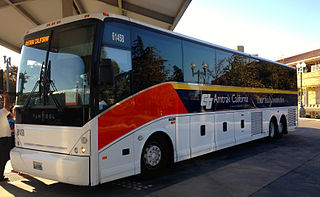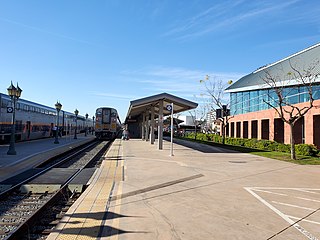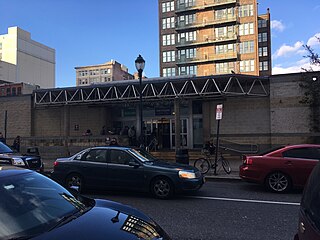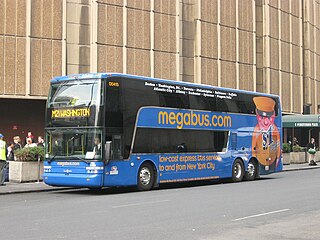Related Research Articles

Berkeley is a city on the eastern shore of San Francisco Bay in northern Alameda County, California, United States. It is named after the 18th-century Anglo-Irish bishop and philosopher George Berkeley. It borders the cities of Oakland and Emeryville to the south and the city of Albany and the unincorporated community of Kensington to the north. Its eastern border with Contra Costa County generally follows the ridge of the Berkeley Hills. The 2020 census recorded a population of 124,321.

Sacramento is the capital city of the U.S. state of California and the county seat of Sacramento County. Located at the confluence of the Sacramento and American Rivers in Northern California's Sacramento Valley, Sacramento's 2020 population of 524,943 makes it the fourth-most populous city in Northern California, sixth-most populous city in the state, and the ninth-most populous state capital in the United States. Sacramento is the seat of the California Legislature and the Governor of California.

Tracy is the second most populated city in San Joaquin County, California, United States. The population was 93,000 at the 2020 census. Tracy is located inside a geographic triangle formed by Interstate 205 on the north side of the city, Interstate 5 to the east, and Interstate 580 to the southwest.

Gavin Christopher Newsom is an American politician and businessman serving since 2019 as the 40th governor of California. A member of the Democratic Party, he was the 49th lieutenant governor of California from 2011 to 2019 and the 42nd mayor of San Francisco from 2004 to 2011.

Greyhound Lines, Inc. (Greyhound) is a company that operates the largest intercity bus service in North America. Services include Greyhound Mexico, charter bus services, and Amtrak Thruway services. Greyhound operates 1,700 coaches produced mainly by Motor Coach Industries and Prevost serving 230 stations and 1,700 destinations. The company's first route began in Hibbing, Minnesota in 1914 and the company adopted the Greyhound name in 1929. The company is owned by Flix North America, Inc., an affiliate of FlixBus, and is based in Downtown Dallas.

In the United States, the number of homeless people on a given night in January 2023 was more than 650,000 according to the Department of Housing and Urban Development. Homelessness has increased in recent years, in large part due to an increasingly severe housing shortage and rising home prices in the United States.
KOVR is a television station licensed to Stockton, California, United States, serving as the CBS outlet for the Sacramento area. It is owned and operated by the network's CBS News and Stations division alongside KMAX-TV, an independent station. The two stations share studios on KOVR Drive in West Sacramento; KOVR's transmitter is located in Walnut Grove, California.

Amtrak Thruway is a system of through-ticketed transportation services to connect passengers with areas not served by Amtrak trains. In most cases these are dedicated motorcoach routes, but can also be non-dedicated intercity bus services, transit buses, vans, taxis, ferry boats and commuter rail trains.

The San Francisco Transbay Terminal was a transportation complex in San Francisco, California, United States, roughly in the center of the rectangle bounded north–south by Mission Street and Howard Street, and east–west by Beale Street and 2nd Street in the South of Market area of the city. It opened on January 14, 1939 as a train station and was converted into a bus depot in 1959. The terminal mainly served San Francisco's downtown and Financial District, as transportation from surrounding communities of the Bay Area terminated there such as: Golden Gate Transit buses from Marin County, AC Transit buses from the East Bay, and SamTrans buses from San Mateo County. Long-distance buses from beyond the Bay Area such as Greyhound and Amtrak Thruway also served the terminal. Several bus lines of the San Francisco Municipal Railway connected with the terminal.

Sacramento Valley Station is an Amtrak railway station in the city of Sacramento, California, at 401 I Street on the corner of Fifth Street, built in 1926 on the site of China Slough. It is the thirteenth busiest Amtrak station in the country, and the second busiest in the Western United States. It is served by four different Amtrak train routes and connecting Amtrak Thruway motorcoaches. It is also the western terminus for the Gold Line of the Sacramento RT Light Rail system and the Route 30 bus serving Sacramento State University.
Rawson-Neal Psychiatric Hospital is a mental hospital located in Las Vegas, Nevada. It opened as a 190-bed facility on August 28, 2006. The hospital is operated by the state of Nevada.

Bakersfield station is an intermodal facility in Bakersfield, California. It is the southern terminus of Amtrak California's San Joaquins route, with Amtrak Thruway buses continuing to Amtrak stations and bus stops throughout Southern California and Nevada. The station opened with a celebration on July 4, 2000. It contains an 8,300-square-foot (770 m2) train station with two platforms and three tracks, as well as a 17-bay bus station.

The Philadelphia Greyhound Terminal was the primary intercity bus station in Philadelphia, Pennsylvania. The station's function relocated to 618 Market Street between Sixth and Seventh Streets in Center City Philadelphia. Prior to relocating to its current Market Street location on June 27, 2023, the terminal was located at 1001 Filbert Street in Center City Philadelphia.

BoltBus was an intercity bus common carrier and a division of Greyhound Lines that operated from March 2008 until July 2021 in the northeast and western United States and British Columbia, Canada.

Megabus is an intercity bus service of Coach USA/Coach Canada operating in the eastern, southern, midwestern, western, and Pacific United States and in the Canadian provinces of Ontario and Quebec. It is the North American service equivalent to the European Megabus.
Greyhound therapy is a pejorative term used in the US health care system since the mid-1960s to refer to mental health authorities' buying a ticket on a Greyhound Lines bus or other coach bus to get rid of possible "troublemaker" patients.

The San Francisco Bay Area comprises nine northern California counties and contains four of the ten most expensive counties in the United States. Strong economic growth has created hundreds of thousands of new jobs, but coupled with severe restrictions on building new housing units, it has resulted in an extreme housing shortage which has driven rents to extremely high levels. The Sacramento Bee notes that large cities like San Francisco and Los Angeles both attribute their recent increases in homeless people to the housing shortage, with the result that homelessness in California overall has increased by 15% from 2015 to 2017. In September 2019, the Council of Economic Advisers released a report in which they stated that deregulation of the housing markets would reduce homelessness in some of the most constrained markets by estimates of 54% in San Francisco, 40 percent in Los Angeles, and 38 percent in San Diego, because rents would fall by 55 percent, 41 percent, and 39 percent respectively. In San Francisco, a minimum wage worker would have to work approximately 4.7 full-time jobs to be able to spend less than 30% of their income on renting a two-bedroom apartment.

Homelessness in the United States has occurred to varying degrees across the country. The total number of homeless people in the United States fluctuates and constantly changes hence a comprehensive figure encompassing the entire nation is not issued since counts from independent shelter providers and statistics managed by the United States Department of Housing and Urban Development vary greatly. Federal HUD counts hover annually at around 500,000 people. Point-in-time counts are also vague measures of homeless populations and are not a precise and definitive indicator for the total number of cases, which may differ in both directions up or down. The most recent figure for the year 2019 that was given was at 567,715 individuals across the country that have experienced homelessness at a point in time during this period.

The United States Department of Housing and Urban Development estimated that more than 181,399 people were experiencing homelessness in California in January 2023. This represents more than 27% of the homeless population of the United States even though California has slightly less than 12% of the country's total population, and is one of the highest per capita rates in the nation, with 0.46% of residents being homeless. More than two-thirds of homeless people in California are unsheltered, which is the highest percentage of any state in the United States. 49% of the unsheltered homeless people in the United States live in California: about 123,423 people, which is eight times as many as the state with the second highest total. Even those who are sheltered are so insecurely, with 90% of homeless adults in California reporting that they spent at least one night unsheltered in the past six months.

The Columbus Bus Station was an intercity bus station in Downtown Columbus, Ohio. The station, managed by Greyhound Lines, also served Barons Bus Lines, Miller Transportation, GoBus, and other carriers. The current building was constructed in 1969. From 1979 until its closure in 2022, with the demolition of Union Station and a short-lived replacement, the Greyhound station was the only intercity transit center in the city.
References
- 1 2 3 4 5 6 7 8 9 10 11 12 13 14 15 16 Gee, Alastair; Wong, Julia Carrie; Lewis, Paul (December 20, 2017). "Bussed out: How America moves its homeless". The Guardian . Retrieved June 5, 2023.
- 1 2 3 4 Wright, James D. (2017). Address Unknown: The Homeless in America. Routledge. pp. xxxii. ISBN 9780202362571.
- 1 2 3 4 5 Santich, Kate (April 23, 2016). "Is homeless exporting a real thing?". The Orlando Sentinel . p. A1, A13. Retrieved June 9, 2023– via Newspapers.com.
- ↑ Alexander, Jeannie (July 28, 2008). "Some understandably fearful of strategies". The Tennessean– via Newspapers.com.
- 1 2 3 4 5 6 Hubert, Cynthia; Reese, Phillip (December 23, 2013). "Crime follows bused mental health patients". The News Tribune. The Sacramento Bee. Retrieved June 11, 2023– via Newspapers.com.
- ↑ Serrano, Richard A. (November 26, 2016). "'Greyhound Therapy' Detailed at Officers' Trial". Los Angeles Times . Retrieved June 10, 2023.
- 1 2 3 4 5 6 7 Baker, Mike (September 14, 2019). "Homeless Residents Got One-Way Tickets Out of Town. Many Returned to the Streets" . The New York Times . Retrieved June 18, 2023.
- ↑ "San Francisco to Expand Access to Homeward Bound Program to Better Meet Clients' Needs". SF.gov – City and County of San Francisco. March 30, 2023. Retrieved June 17, 2023.
- 1 2 3 Filosa, Gwen (November 26, 2016). "Key West homeless shelter asking for money for bus tickets". Florida Keys Keynoter. pp. 1A, 2A. Retrieved June 10, 2023– via Newspapers.com.
- ↑ Butler, Pat (August 3, 1996). "Homeless, Atlanta police in uneasy truce". The State. Columbia, South Carolina. p. 6 – via Newspapers.com.
- ↑ "State lawmaker: Buy homeless tickets back to mainland". West Hawaii Today. January 26, 2009. Retrieved June 15, 2023– via Newspapers.com.
- ↑ Pike, Deirdre (November 14, 2002). "Just the ticket". Reno News & Review. Retrieved June 9, 2023.
- 1 2 Brand, David (October 13, 2021). "Far Fewer Homeless Families Using Rent Subsidies to Move Out of NYC". City Limits. Retrieved June 20, 2023.
- ↑ "Rental Assistance – SOTA". NYC Human Resources Administration. Retrieved June 20, 2023.
- ↑ Stewart, Nikita (December 3, 2019). "They Ended Up in Decrepit Housing in Newark. Is New York to Blame?" . The New York Times . Retrieved June 24, 2023.
- ↑ Romine, Taylor (December 5, 2019). "Newark sues New York over homeless relocation program". CNN. Retrieved July 9, 2023.